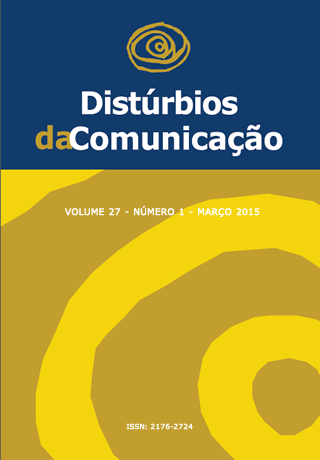Perfil miofuncionalorofacial de la demanda dental pediátrica del Hospital Universitario de Aracaju / SE
Palabras clave:
Fonoaudiología, Odontología Pediátrica, Sistema Estomatognático, Perfil de SaludResumen
INTRODUCCIÓN: Trazar el perfil de la salud de una determinada comunidad es importante para la implementación de acciones en diferentes niveles de atención y para estructurar servicios interdisciplinares en Salud. OBJETIVO: Describir el perfil miofuncionalorofacial de la demanda dental pediátrica de un hospital universitario permitiendo la acción interdisciplinaria en las propuestas futuras. MATERIAL Y MÉTODO: Estudio clínico-observacional, descriptivo, cuantitativo, de una proyección con 60 niños de ambos los géneros, en el grupo de edad de cinco a diez años, oriundas de la clínica dental pediátrica del Hospital Universitario de la Universidad Federal de Sergipe. Los padres o responsables autorizaran la participación de los niños firmando el Termo de Consentimiento Libre y Esclarecido. Se utilizó el protocolo MBGR adaptado. RESULTADOS: De los 60 niños evaluados, 34 eran del género masculino (56,7%) y 26 del género femenino (43,3%). De estas, 39 (65,0%) presentaran alteración en la respiración, 36 (60,0%) en el acto masticar, 26 (43,3%) en la deglución, 21 (35,0%) en la habla y seis (10%) no presentaran alteración en las estructuras miofuncionalesorofaciales. CONCLUSIONES: Se puede observar que la mayoría de los niños presentó disturbio miofuncionalorofacial, siendo que las alteraciones cuanto al modo respiratorio y cuanto a la masticación fueran las más prevalentes, en el grupo de estudio. A partir de estos datos, es acorde con la importancia de la terapia del habla, en colaboración con la Odontología Pediátrica y Otorrinolaringología, con el fin de minimizar el impacto de los cambios miofuncionalorofacial y maximizar la calidad de vida de estos niños.
Descargas
Métricas
Descargas
Publicado
Número
Sección
Licencia
Derechos de autor 2015 Silvia Elaine Zuim de Moraes Baldrighi, Carla Patrícia Hernandez Alves Ribeiro César, Aline Ferreira de Brito, Gabriela Guimarães Ferreira, Marianne Ribeiro Costa Rodrigues, Liz Teixeira Nascimento, Fernanda Santana Santos

Esta obra está bajo una licencia internacional Creative Commons Atribución 4.0.









